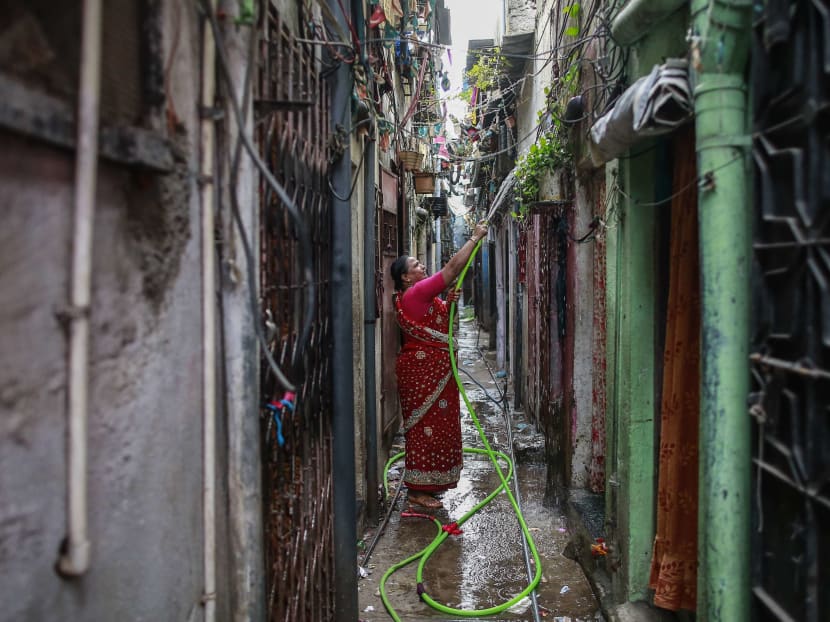India slides in gender equality global ranking
NEW DELHI — Indian women still face some of the world’s worst inequality in access to health care, education and work, despite years of rapid economic growth, according to a survey of 142 nations released today (Oct 28)

A woman waters the plants outside her house in an alley at a slum in Mumbai October 28, 2014. Photo: Reuters
NEW DELHI — Indian women still face some of the world’s worst inequality in access to health care, education and work, despite years of rapid economic growth, according to a survey of 142 nations released today (Oct 28)
The annual Gender Gap Index by the Geneva-based World Economic Forum showed India falling to 114th place, after being ranked 101st out of 136 countries surveyed last year. That puts India below other fast-developing nations including China, ranked 87th, and Brazil at 71.
Nordic nations led the world in promoting equality of the sexes, as they have for many years, with Iceland, Finland, Norway, Sweden and Denmark occupying the top five spots.
The United States climbed three places to 20th, thanks to a narrowing wage gap and more women occupying political offices.
“Achieving gender equality is obviously necessary for economic reasons. Only those economies who have full access to all their talent will remain competitive and will prosper,” said Mr Klaus Schwab, WEF founder and executive chairman, in a statement.
Yemen, Pakistan and Chad remained at the bottom of the index, which ranks countries based on government statistics in four categories: health and survival, access to education, economic opportunity and political participation.
India ranked an impressive 15th for female political participation, given a large number of women holding public office. But it was among the bottom 20 in terms of income, literacy, work force participation and infant survival.
Indian voters gave new Prime Minister Narendra Modi’s party an enormous election mandate this year after he campaigned on promises of creating a fairer society and reviving economic growth, which slumped to below 5 per cent in recent years after averaging 8 percent for a decade.
Mr Modi has also spoken publicly against rape and violence against women, giving many hope for change after decades of political apathy in addressing women’s concerns, including violence such as rape and physical abuse, high rates of maternal mortality and female infanticide. The Gender Gap Index placed India second to last, ahead of Armenia, in terms of health care and survival.
Mr Modi’s government has said it plans to launch a new program next month to improve the health of pregnant woman and empower young girls. India’s female-male sex ratio has fallen to its worst level since the country gained independence in 1947, with 918 girls born for every 1,000 boys. It is illegal for medical workers to reveal the sex of a child before it’s born, a measure to prevent families from aborting female babies.
“The intent looks good so far from the prime minister, but it’s too soon to say,” said Dr Ranjana Kumari, director of the Delhi-based Centre for Social Research, who called for more effort in guaranteeing the nation’s wealth is used to benefit women and the poor. “There is no natural trickle down. India needs legislation to make sure that happens.” AP





